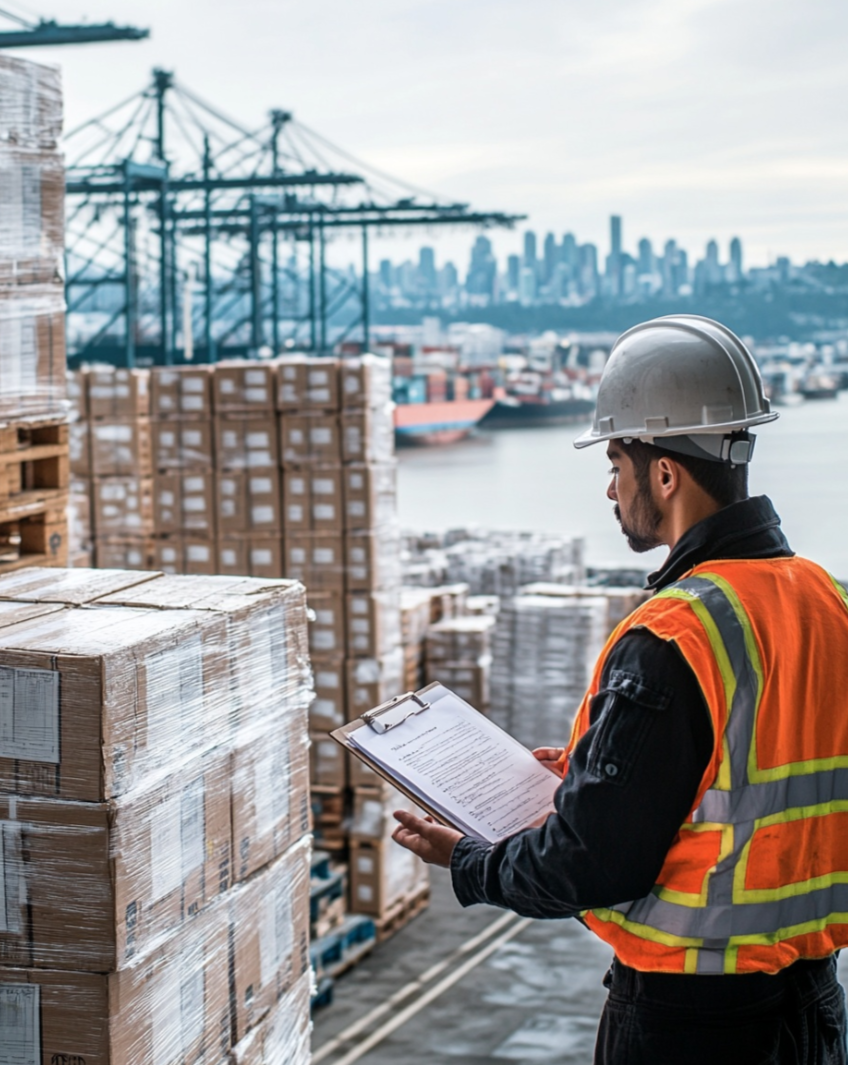In the ever-changing landscape of global trade, adhering to tariff regulations is one of the most critical tasks for import-export businesses, especially for small business owners seeking sustainable growth. Tariff compliance isn’t just a bureaucratic step; it’s a vital component of risk management, cost optimization, and seamless international transactions. Failure to comply can lead to costly fines, delayed shipments, and damaged reputations. In this comprehensive guide, we’ll explore actionable strategies and best practices to help small business owners ensure proper tariff compliance—setting their businesses on the path to sustainable success.
What Is Tariff Compliance?
At its core, tariff compliance involves adhering to the rules and regulations imposed by customs authorities regarding the classification, valuation, and declaration of goods for import or export. Compliance ensures that businesses pay the correct duties, taxes, and tariffs, avoiding legal and financial headaches.
Moreover, tariff compliance is not a one-time action. It involves ongoing practices like accurate customs documentation, staying updated on regulatory changes, and conducting regular compliance audits to ensure that operational processes align with evolving standards. For many small business owners, mastering tariff compliance paves the way to more efficient supply chains, lower costs, and better relationships with suppliers and customs officials.
The Importance of Tariff Compliance for Small Businesses
Small businesses, often operating with lower profit margins and limited resources, are more vulnerable to the financial risks associated with noncompliance. Common repercussions of tariff violation include:
- Excessive Fines: Customs authorities can impose hefty fines on businesses that fail to meet compliance standards.
- Delayed Shipments: Inaccurate or incomplete documentation can lead to significant delays at customs clearance points.
- Reputational Damage: Consistent violations can damage your reputation, affecting relationships with suppliers, buyers, and customs officials.
- Loss of Benefits: Businesses may lose access to advantageous trade programs, such as free trade agreements, if compliance isn’t maintained.
Ensuring tariff compliance avoids these roadblocks and offers opportunities to operate more cost-effectively. Let’s review the specific strategies for simplifying tariff adherence and generating a competitive edge.
Conducting Compliance Audits
What Are Compliance Audits?
Compliance audits are structured evaluations of a business’s import-export operations to identify gaps, errors, or risks in tariff compliance. During an audit, aspects such as customs documentation, tariff codes, duty calculations, and trade agreements are meticulously examined.
Why Compliance Audits Matter
For small businesses, regular compliance audits create an opportunity to address vulnerabilities before they escalate into regulatory violations. Some benefits include:
- Enhanced Accuracy: Audits help ensure that all declarations and customs documentation are error-free.
- Cost Control: Discrepancies in duties or missed tariff savings opportunities can be identified.
- Efficiency Gains: Streamlining compliance processes makes operations more efficient by reducing delays and complications.
Example in Action:
Tom, the owner of a small electronics import business, discovered during a routine compliance audit that erroneously assigned HS codes were causing him to pay higher duties on several shipments. By partnering with a trade consultant and correcting these errors, Tom was able to save $25,000 annually in duties—funds he reinvested into growing his product range.
Risk Assessment in Tariff Compliance
Identifying Risks in the Import-Export Business
Risk assessment is a cornerstone of tariff compliance. It involves identifying factors that could pose barriers to smooth operations and working proactively to resolve them.
Key Risk Factors for Small Business Owners:
- Geopolitical Risks: Political instability, trade disputes, or tariff wars may impact duties and regulations.
- Supply Chain Vulnerabilities: Unexpected disruptions such as port blockages or supplier complications can derail compliance efforts.
- Currency Fluctuations: Uncontrolled currency variations may unexpectedly impact landed costs.
- Regulatory Changes: Customs rules and tariffs often change, placing businesses at risk of noncompliance if they don’t stay informed.
Actionable Risk Assessment Strategies:
- Maintain open communication with suppliers and logistics partners to anticipate supply chain disruptions.
- Use digital tools like Global Trade Intelligence Software for real-time updates on tariff shifts.
- Budget for currency fluctuations to cushion unexpected costs.
Case Study:
Jane’s online home goods store relies heavily on imports from Southeast Asia. After encountering unexpected regulatory changes that delayed a significant shipment of furniture, Jane incorporated a quarterly risk assessment process into her operations. This allowed her to identify potential delays early, negotiate with suppliers, and switch to alternate routes when needed—preventing future disruptions.
The Role of Harmonized System Codes in Compliance
What Are Harmonized System (HS) Codes?
HS codes are standardized numerical identifiers for goods traded internationally. Customs authorities use them to determine the applicable duties, taxes, and documentation requirements for shipments.
Common HS Code Challenges:
- Misclassification: Incorrectly assigned HS codes can either overestimate duties or cause underpayment, triggering penalties.
- Complexity of Products: Multi-material or composite products often have overlapping code classifications, making compliance challenging.
- Regional Variations: Countries may interpret or modify global HS codes differently, complicating cross-border trade.
Steps to Accurately Classify Products:
- Research Thoroughly: Understand the HS classification system and cross-check against product details.
- Double-Check with Experts: Consult customs brokers or trade experts to resolve complex classifications.
- Invest in Technology: Automated tools can simplify the assignment of accurate HS codes based on product descriptions.
Successful Application:
A small boutique importing eco-friendly home décor struggled with misclassification of their bamboo products under incorrect HS codes, resulting in a 16% duty on goods that should have been duty-free under a free trade agreement. After consulting with a customs expert, they successfully reclassified their products, saving thousands in import duties annually.
Approaches to Optimize Import Duties
Importance of Managing Import Duties
For small businesses, import duties are a significant cost factor, often impacting profitability and product pricing. Optimizing these costs without compromising compliance ensures a competitive edge.
Strategies to Reduce Import Duty Costs:
- Leverage Free Trade Agreements (FTAs): Identify and use FTAs between exporting and importing countries to benefit from reduced or zero tariffs.
- Explore Duty Drawback Programs: In cases where imported items are exported again, businesses can claim refunds on duties paid during importation.
- Understand Customs Valuation Principles: Accurately report transaction values, ensure deductions for eligible costs, and avoid overvaluation of shipments.
- Negotiate Supplier Terms: In some cases, suppliers can take responsibility for duties under trade contracts.
Real-Life Example:
Sharon, who runs a small interior design firm importing custom furniture, successfully used a duty drawback program to reclaim part of the duties she paid on unsold goods she later exported to Canada. This not only saved her money but also strengthened her financial resilience.
Practical Tips for Tariff Compliance Success
1. Invest in Training:
Educate your team about tariff compliance, including HS codes, trade regulations, and customs documentation. Staying updated through workshops, webinars, and certifications can significantly lower compliance errors.
2. Build Strong Partnerships:
Collaborate with customs brokers, trade consultants, and industry networks. Their expertise can provide valuable insights into regulatory changes and best practices.
3. Leverage Compliance Technologies:
Adopt automated compliance tools to enhance accuracy, reduce paperwork, and monitor regulatory updates. These systems improve efficiency and free up time for strategic planning.
4. Document Everything:
Maintain meticulous records, including shipment invoices, HS code assessments, and tariff calculations. Comprehensive documentation provides a safety net during compliance audits.
Real-World Success Stories
Story 1:
Eddie, the owner of an artisanal chocolate import business, routinely faced delays due to incomplete customs paperwork. After implementing an automated documentation system, Eddie reduced his customs delays by 50%, allowing him to scale his business into new markets without friction.
Story 2:
A small textile manufacturing business in the U.S. struggled with varying tariff rates across different markets. By consulting with a trade compliance expert, they tapped into lesser-known FTAs and saved nearly 10% on costs when importing raw materials.
Conclusion
Ensuring tariff compliance for your import-export business is neither optional nor one-size-fits-all—it is a continuous process requiring vigilance, adaptability, and strategic planning. Mastering compliance through regular audits, risk assessments, accurate HS code classification, and duty optimization not only mitigates risks but also enhances profitability and operational efficiency.
By proactively addressing these aspects, small business owners can secure their foothold in the competitive global trade ecosystem. Take the first step today: invest in compliance tools, seek expert guidance, and create a compliance strategy aligned with your specific business goals. With the right approach, tariff compliance will transform from a challenge into a cornerstone of your business’s success.




